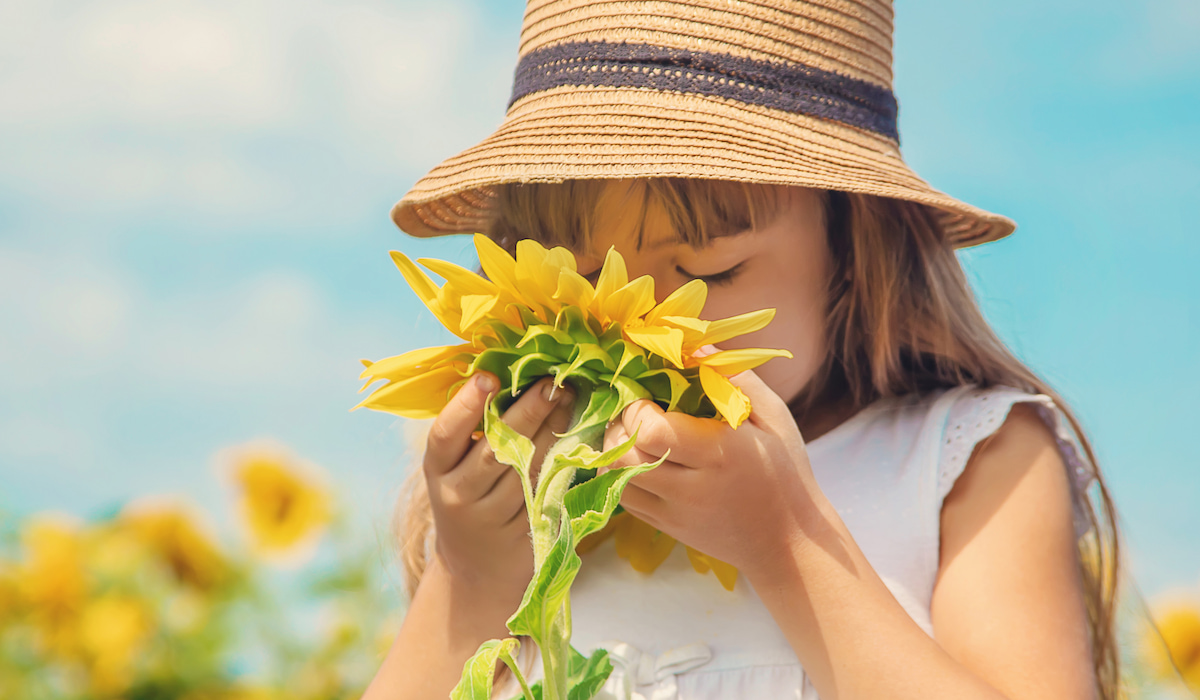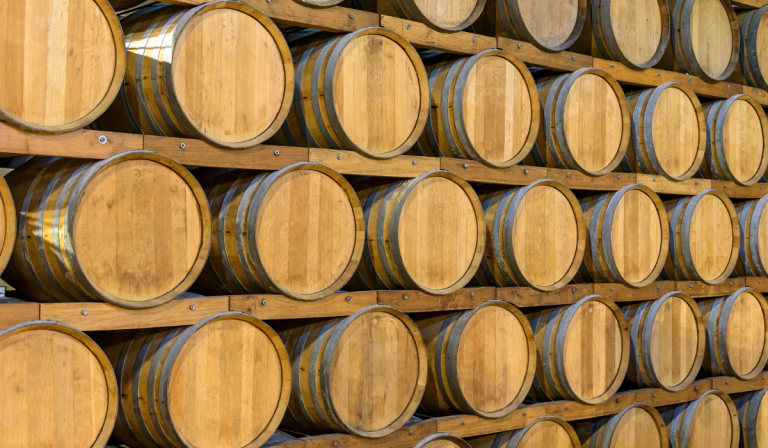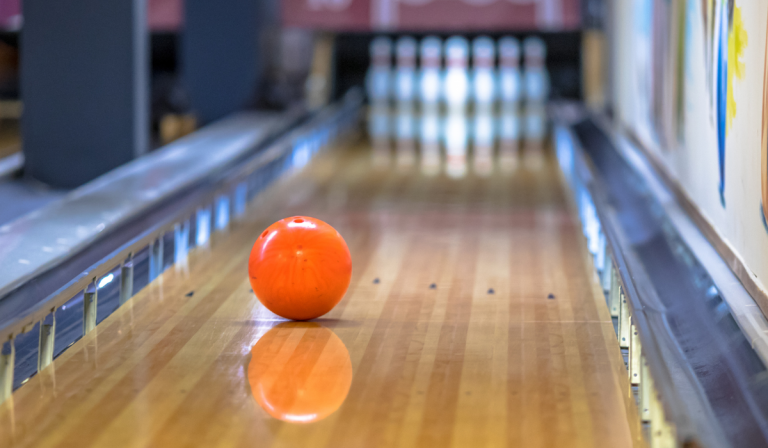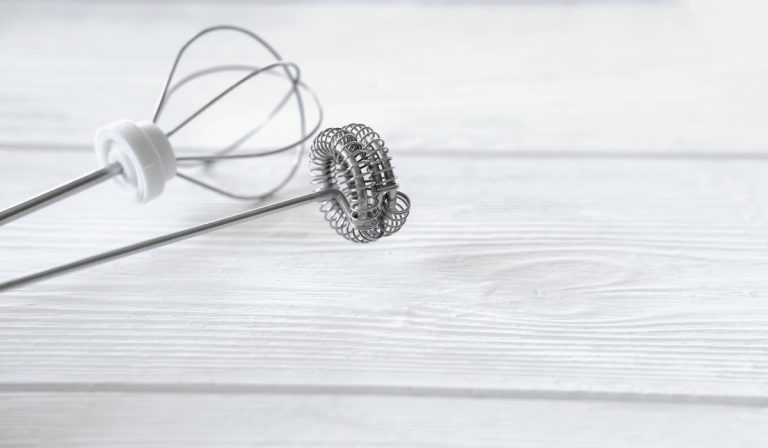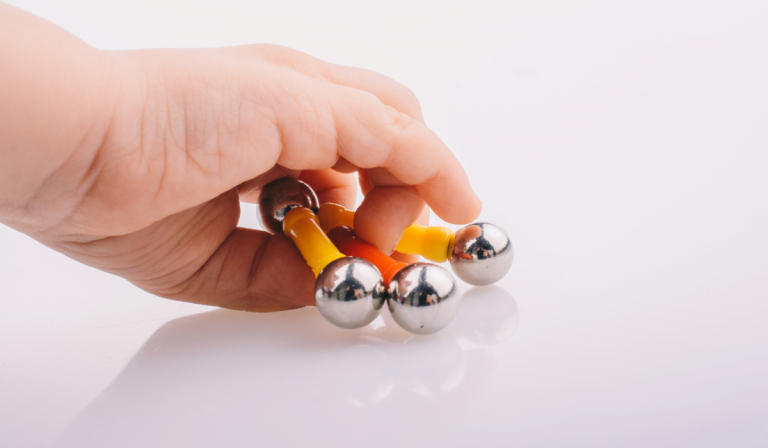17 Cool Facts About Sunflowers
Over the years, sunflowers have been the subject of many art pieces including, film, painting, and music.
They are also the poster flower for most gardens in the summer and are one of the fastest-growing annual flowers. On average, it takes around 80-120 days for them to mature after germination.
Did you know that sunflowers are so named because their flowers follow the rays of the sun?
There are many other cool facts about sunflowers that you may not be aware of, and in this article, we run through them.
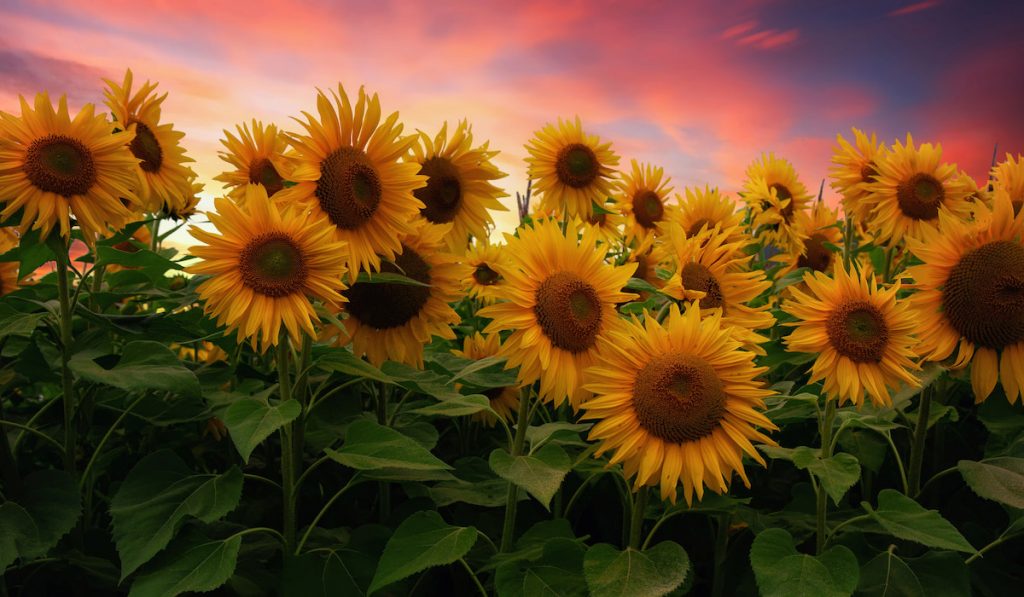
Sunflowers Have Been Around for Over 5000 Years
Sunflowers are indigenous to North America. There is evidence to suggest they grew as early as 3,000 B.C. Sunflowers were used as milling flour for making bread and cakes. Their seeds were also eaten as snacks.
Sunflowers also had several applications within the medical and textile industry. In the 1500s, Spanish conquistadors began exporting Sunflowers to the rest of the world.
Sunflowers Have Different Meanings in Different Cultures
Sunflowers are cheerful flowers that have different meanings. Throughout history, sunflowers have inspired various individuals.
Sunflowers are known to symbolize longevity, life, loyalty, and joy. In some other cultures, sunflowers are a sign of good fortune and vitality.
They are also a symbol of optimism, hope and can be a source of happiness and positivity.
There Are Nearly 70 Species of Sunflowers
Helianthus is the scientific name for sunflowers. It was derived from the Greek words for sun and flower.
With almost 70 different species, sunflowers appear in many different shapes and sizes. Short sunflowers are usually called dwarfs and tend to grow in clusters.
Sunflowers Track the Sun’s Rays
As their name suggests, sunflowers are known to track the rays of the sun. This behavior of tracking the sun is known as heliotropism.
In the morning, young blossoms and flower buds face east and will follow the sun throughout the day. At night sunflowers slowly turn east to repeat this cycle.
However, when sunflowers reach maturity, the flowers are heavier, and the stems stiffen. This leaves the flower head facing east.

Young Sunflowers Will Track the Sun’s Rays on Cloudy Days
When it is cloudy, young sunflowers still track the sun’s rays even when the sun is not visible. But when they mature, they will learn to stop following the sun and be satisfied with the rays they receive.
There Are Thousands of Teeny Flowers in a Single Sunflower Head
A sunflower blossom is called a head. If you take a close look at the center of the head, you will notice tiny blooms. These minute blooms are called disc florets. A sunflower bloom can contain as many as 2,000 disc florets.
Disc florets are where seeds develop since they possess both male and female sex organs. The petals surrounding a sunflower head are also flowers called ray florets. However, unlike disc florets, ray florets do not reproduce.
Sunflowers Have Rough and Spiky Leaves
Sunflowers have leaves that have a spiky and oval appearance. These leaves have rough, hairy surfaces and measure around 12 inches.
The leaves have a dull green surface, with light green petioles covered with short hairs.
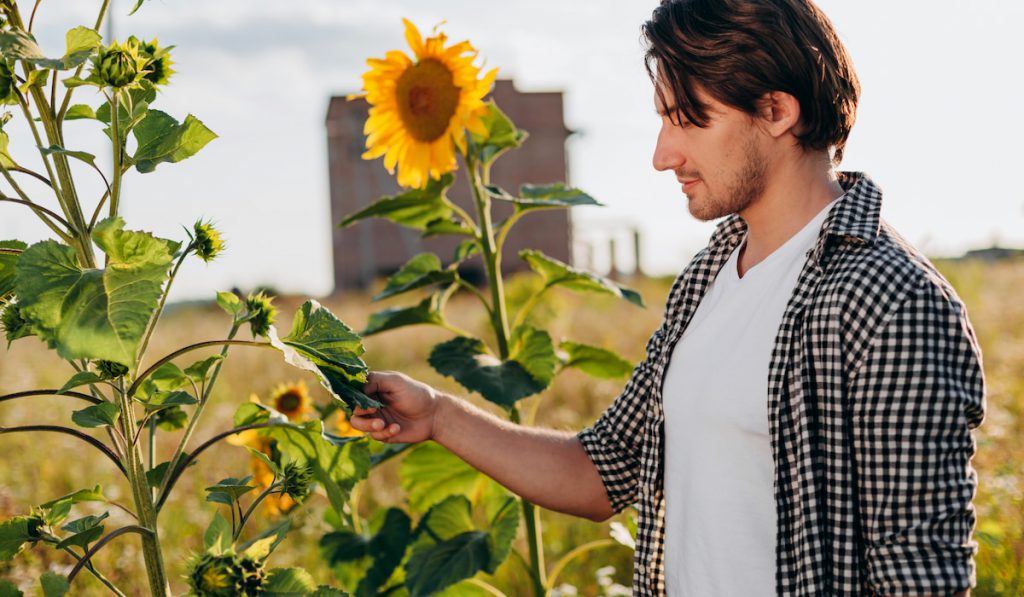
Sunflower Seeds Are Healthy Snacks
Sunflower seeds develop in the ovary, which is the middle section of the flower.
Although sunflower seeds are needed to grow the flowers, they are also edible to birds and humans. You can roast sunflower seeds and have them as a healthy snack.
There are two types of sunflower seeds: oilseed and non-oilseed. Oilseeds generally are produced for oil extraction.
You can use sunflower oil for skincare products, cooking, and medical purposes. Oilseeds are also suitable for feeding birds.
Non-Oilseeds, on the other hand, are produced for human consumption. You can find these seeds on the flower head part of the plant. Non-Oilseeds taste better when you roast them with salt.
Sunflowers Are Multi-Purpose Plants
Besides being nutritious for birds and healthy snacks for humans, sunflowers can also absorb toxins. As a result, this plant is considered a hyperaccumulator.
When the earthquake of Fukushima resulted in a radiation leak at a nuclear plant, they planted sunflowers to absorb the radiation from the soil. The plant stores the nuclear waste in its stems and leaves.
You can also convert sunflowers into scrubbing pads. Once the flower heads become dry with no seeds, you can turn them into disposable scrubbing pads.
Some People Have a Phobia of Sunflowers
Despite being symbols of positivity, there are people who are afraid of sunflowers. Anyone scared of sunflowers is said to be suffering from Helianthophobia.
Although it may sound weird; smelling, looking, or even thinking of a sunflower is enough to scare some people.

Sunflowers Can Be Tall or Dwarfs
Sunflowers can belong to either the tall or dwarf category.
While the dwarfs do not grow more than 2 feet, the tall ones can be 8 times as tall as the dwarfs.
Tall Sunflowers are yellow, durable, and can reach heights of around 12-16 feet. Depending on the species, some may even grow taller. Some examples of tall Sunflowers include Russian Mammoth, Skyscraper, and Sunforest Mix.
Tall Sunflowers tend to attract birds due to their height and this, in turn, attracts people who love bird watching.
Dwarf Sunflowers usually grow in clusters and are ideal for pots and small gardens. They are called dwarfs because they do not get taller than 3 feet. Some Dwarf Sunflowers include Pacino, Little Becka, and Suntastic Yellow.
Sunflowers Can Self-Pollinate
When there are no bees or other pollinators, many sunflowers will self-pollinate. The ability to self-pollinate ensures these plants remain alive when there are no pollinators around.
When the seeds self-pollinate, they will produce flowers that are similar to the original plant. The ability of a sunflower to be both male and female gives the plant a higher chance of survival.
Not All Sunflowers Are Yellow
Most people believe all sunflowers are yellow. However, this is not true sunflowers can also be red, orange, brown, purple, and bi-colored.
Generally, Yellow Sunflowers are vibrant and will certainly put a smile on your face. The American Giant is known as one of the tallest Sunflower species. They can grow to around 14 feet tall, while their faces can measure about 12 inches wide.
Red Sunflowers, on the other hand, come with dark brown centers and vibrant red petals. There are different varieties of Red Sunflowers, with some having heads similar to Daisies. A mature Red Sunflower is about 6 feet tall with 5- to 6-inch blooms.
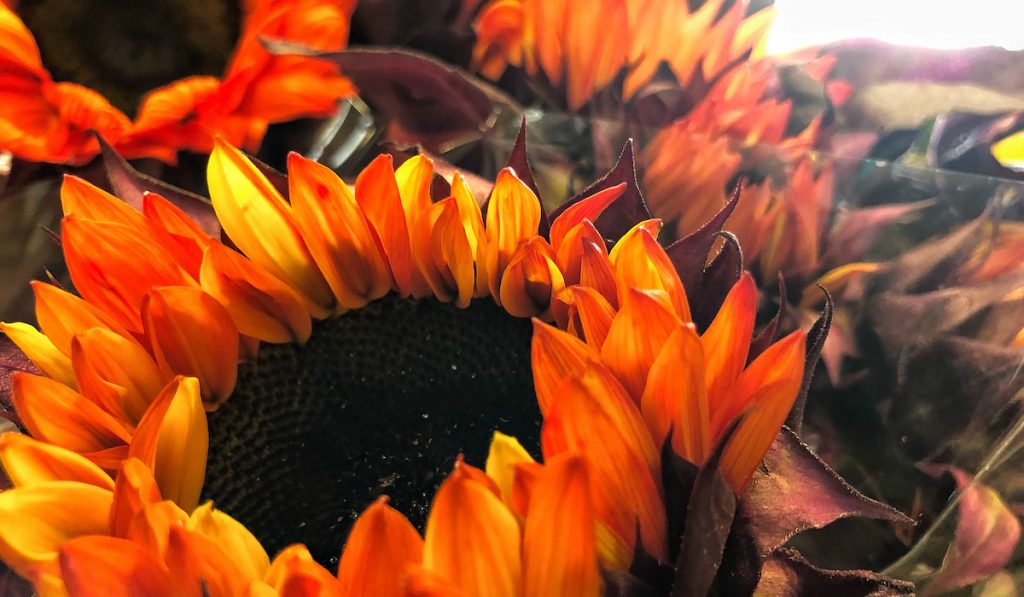
The Tallest Sunflower in the World Is Over 30 Feet.
The tallest sunflower in the world is in Germany.
This feat was confirmed in the summer of 2014 by Guinness World Records.
The sunflower measured 30 feet and 1 inch. The assistance of the local fire brigade was needed when they measured the sunflower and it was so tall it required a scaffolding of its own.
You Can Produce Sunflower Seed Butter From Sunflower Seeds
Just like you have almond butter and peanut butter, you can also grind sunflower seeds to produce sunflower seed butter. If you are allergic to nuts, you can make sunflower seed butter a part of your diet.
Sunflower seed butter contains less saturated fat than peanut butter. It also has more minerals than almond and peanut butter.
Most Sunflower Blooms Pop Out In the Middle of Summer
Generally, sunflowers start producing blooms during summer. However, some bloom as late as fall and try to catch up with the rest.
Sunflowers Can Be Cuddly
There is a particular sunflower that most people mistake for a stuffed animal. It is known as the Teddy Bear Sunflower.
Teddy Bear Sunflowers have a spherical and bushy appearance. They usually produce double blooms, and have a stuffed and fluffy head like a stuffed teddy.
The unusual anatomy of the Teddy Bear Sunflower resulted in an award from the Royal Horticultural Society in 2015.
You can use the Teddy Bear Sunflower for decorating cakes or as a salad garnish.
Resources
- https://mrplantgeek.com/2021/05/01/7-amazing-facts-about-sunflowers/
- http://www.royaltonlibrary.org/cms/wp-content/uploads/2020/03/Fun-Facts-About-Sunflowers.pdf
- https://shesaidsunflower.com/50-amazing-facts-about-sunflowers/
- https://facts.net/nature/plants/sunflower-facts/
- https://www.thespruce.com/fun-facts-about-sunflowers-3972329
- https://www.proflowers.com/blog/sunflower-facts
- https://www.mentalfloss.com/article/68726/10-glorious-facts-about-sunflowers
- http://justfunfacts.com/interesting-facts-about-sunflowers/
- https://www.floraly.com.au/blogs/news/sunflowers
